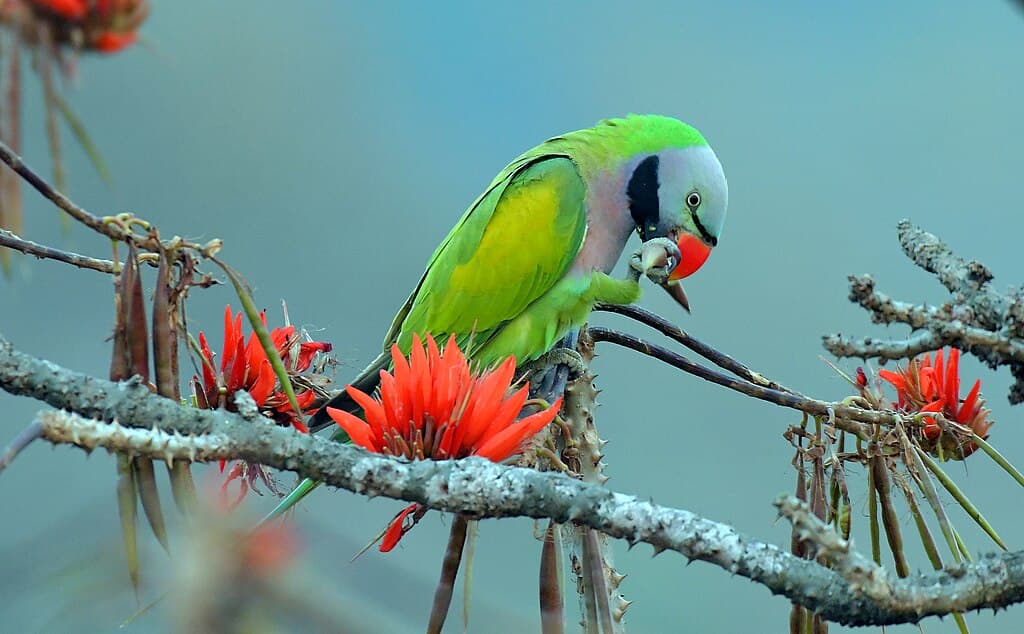Parakeets are beautiful parrot species that many people love having as pets. There are 4 parakeet species in Cambodia but not a lot of people know their actual names or habitats. It is true that they are fond of by many people due to their ability to speak and striking colors. However, we are going to learn a bit more about each parakeet species today so let’s take a look.
Alexandrine Parakeet (សេកសោម)
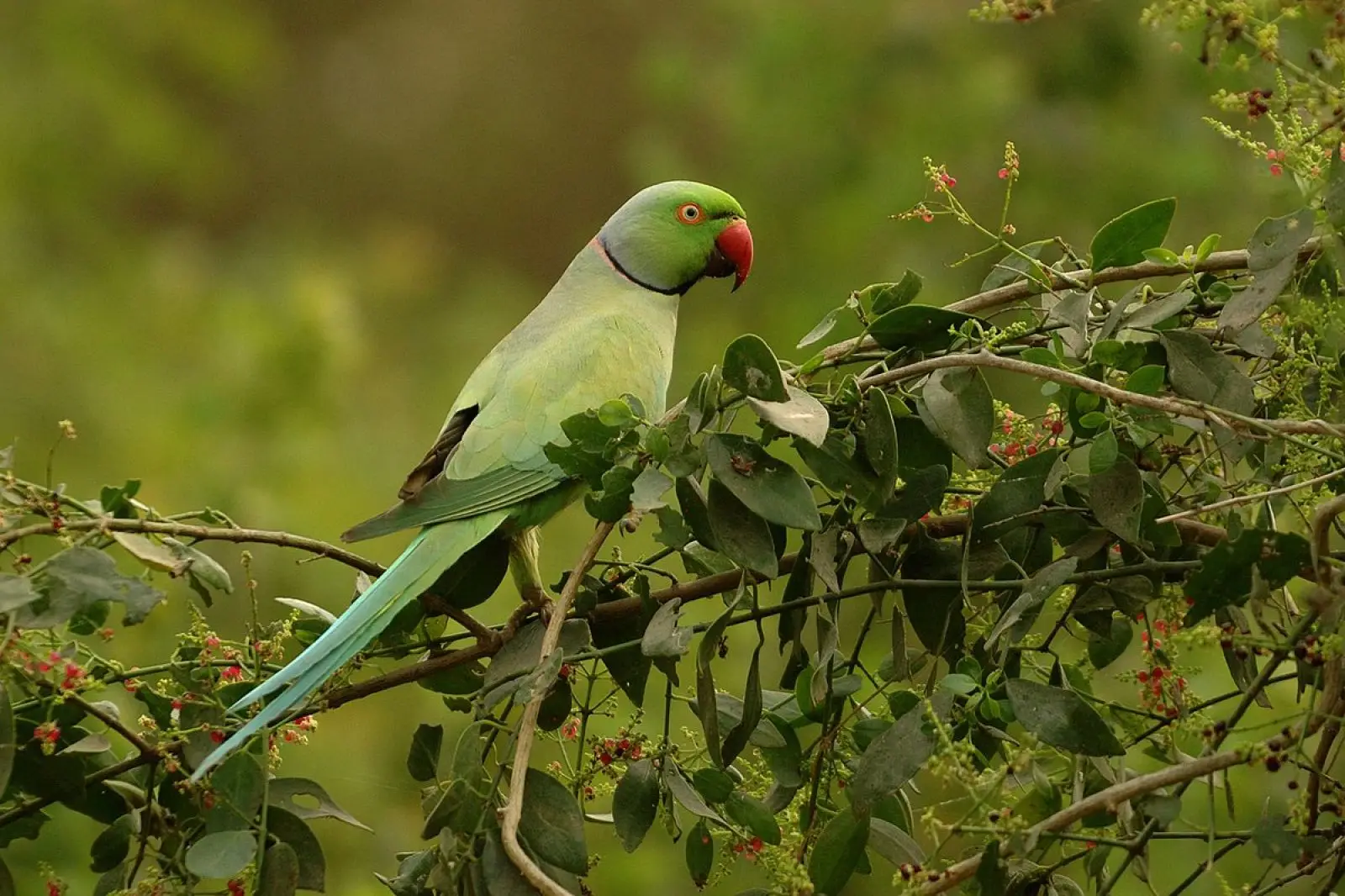
The Alexandrine parakeet is one of the largest parakeets in the family, having a large head and bill. It is around 56 to 62 centimeters from the top of the head to the tip of the tail. An Alexandrine parakeet’s sleek body is predominantly green with a light blue-gray sheen on the cheeks and nape. It has a yellow-green abdomen, a red patch on the shoulders, and a green tail with yellow tips and underside. The beak is very large, and it is red with yellow tips.
This beautiful parakeet species lives in agricultural lands, forests, mangrove forests, and woodlands across South and Southeast Asia. Across those areas, they feed on buds, fruits, nuts, and seeds. In their native range, they prefer forests and open woodland but they can also adapt to human settlements. They usually live in small flocks but large groups are common in areas where food is abundant which can cause damage to crops. When it comes to behavior, these parakeets are very playful and talkative. These are the reasons why they are popular pets apart from being loyal and quick to learn tricks.
The population of the Alexandrine parakeets is declining due to excessive capture for the illegal wildlife trade, habitat loss, and persecution. In some of their range, especially Sri Lanka, they are classified as Near Threatened on the IUCN Red List.
Blossom-Headed Parakeet (សេកអាត់)
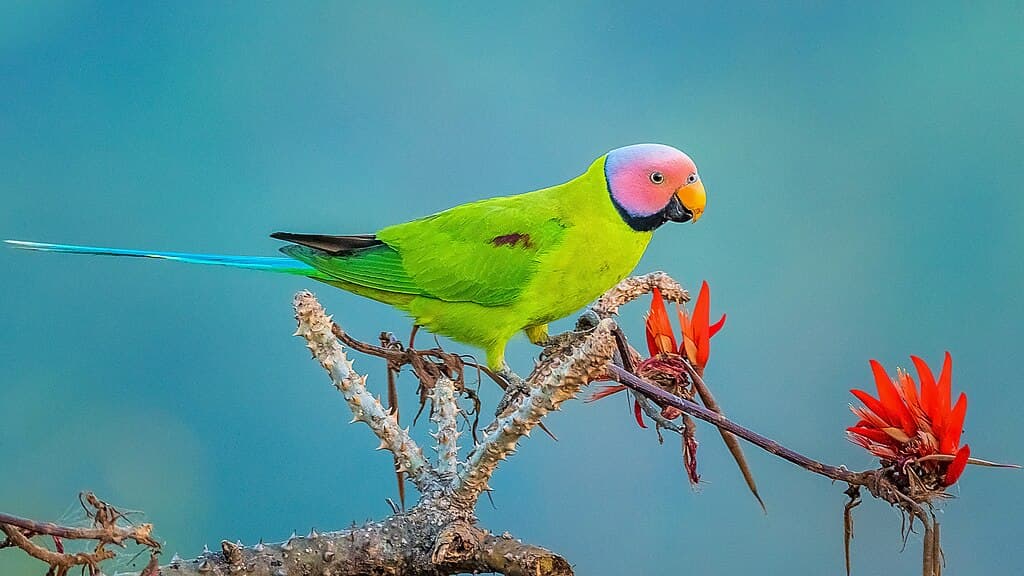
The name says it all, and it is not difficult to recognize this beautiful parakeet species at all. A blossom-headed parakeet is a small parrot that is only around 30 centimeters with a long tail that is 18 centimeters. Both sexes have a lime-green body but males have a pink head while females have a pale gray head. Also, the tails of both sexes are bluish-green. This is how you can tell which one is a male and which one is a female. Along with that, males also have a black neck collar that the females lack.
Blossom-headed parakeets are residents of South Asia and Southeast Asia, living across forest edges, foothills, lowlands, and open forests. Across their range, these parakeets nest in tree holes and they gather groups making noise all day long. Some also made it to urban areas so it is uncommon to see them hanging upside down or resting on buildings. These birds feed on blossoms, fruits, grains, and seeds, and many tourists also drop bread crumbs for them as well. They are great pets, and they can learn to mimic beeps and short whistling tunes; but not human speech. The blossom-head parakeet’s population is doing well though habitat loss forces them to settle in urban areas.
Gray-Headed Parakeet (សេកក្បាលប្រផេះ)
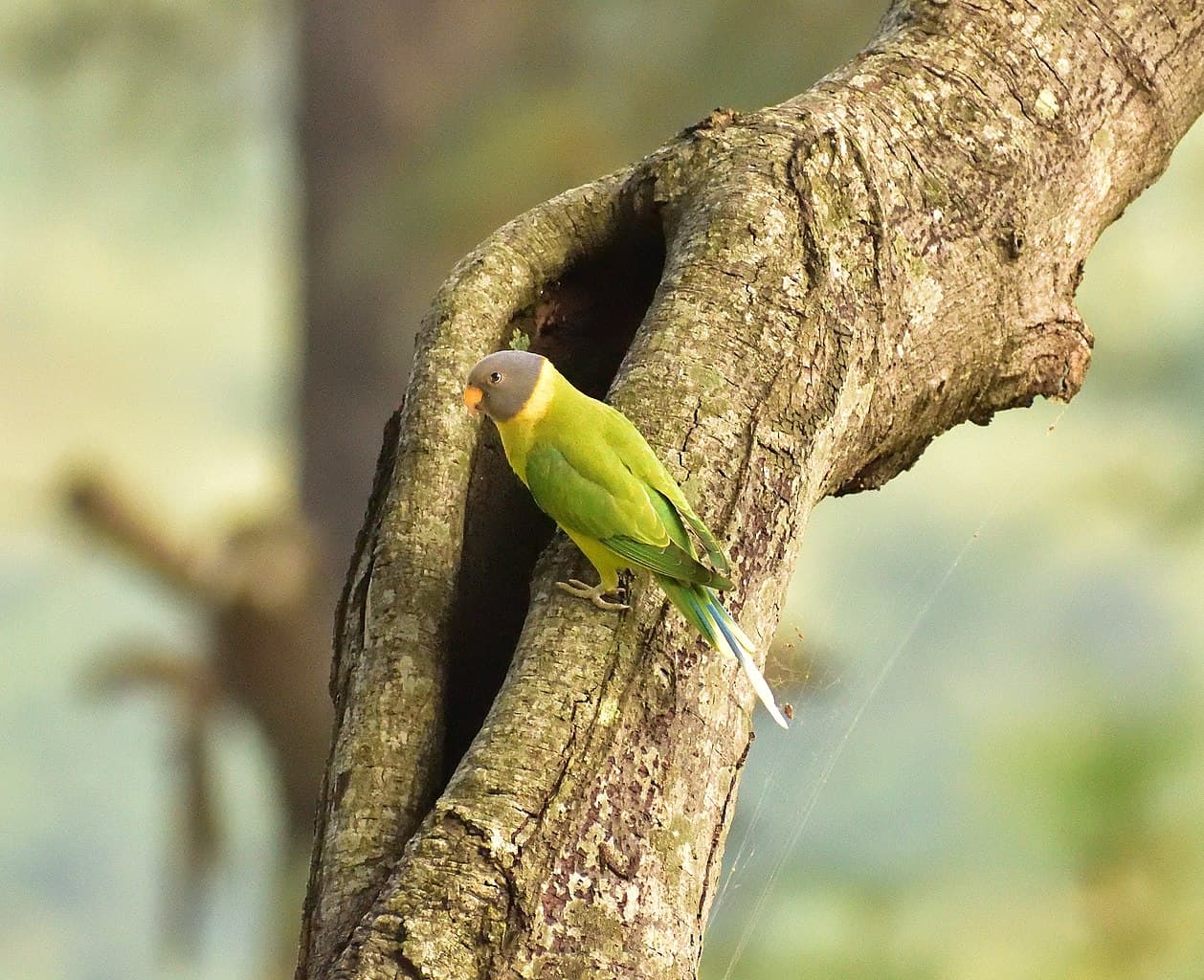
Once again, the name tells you exactly what this parakeet species looks like; a gray head. The thing is that its face is gray-green while the rest of its head is dull green. This bird also has a faint pale green band below its cheeks to its hind crown as well. It is around 35 to 40 centimeters in length, and it has a very long tail feather for a small bird.
Gray-headed parakeets are native to East Asia and Southeast Asia, living from northeastern India all the way to Cambodia. They like living in forests with cedar, oak, pine, and teak trees as well as deciduous forest hillsides and farmland with scattered trees. In Cambodia, gray-headed parakeets are common in areas with evergreen and semi-evergreen vegetation. The diet of these beautiful birds consists of berries, buds, flowers, fruits, grains, grass, leaf buds, legumes, nuts, seeds, and shoots.
Beauty comes with consequences, and this parakeet species is often captured for the exotic bird trade and pets. On top of trapping, deforestation and logging play a huge part in affecting their natural habitats and population. This is why the gray-headed parakeets are classified as Near Threatened on the IUCN Red List.
Red-Breasted Parakeet (សេកសក)
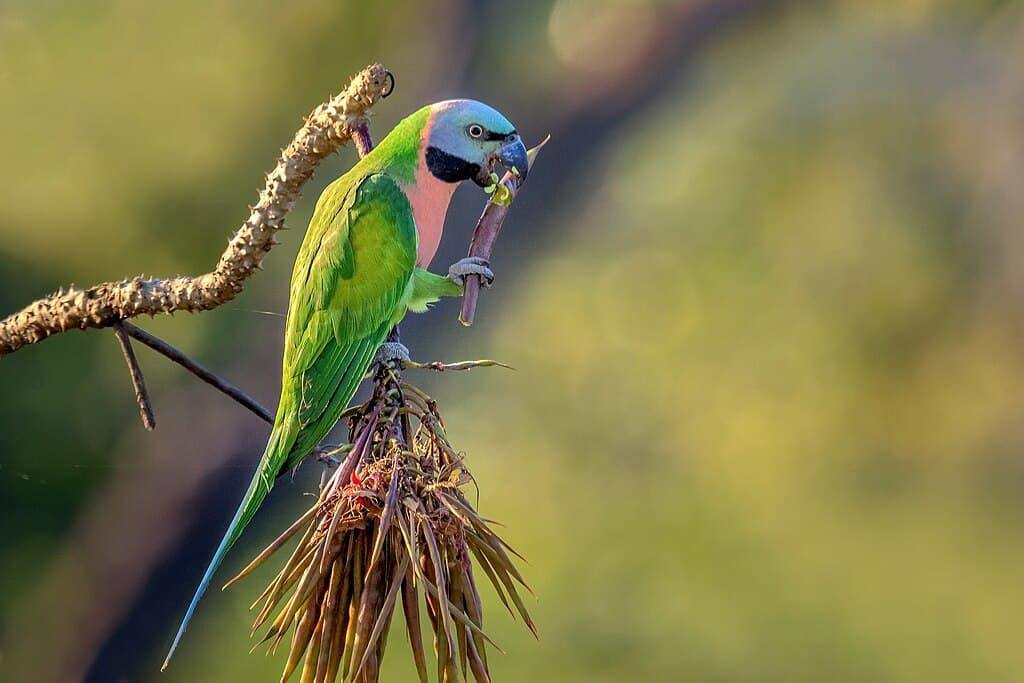
Red-breasted parakeets also go by the name mustached parakeet due to the distinctive feathers above their beaks that resemble mustaches. These parakeets are around 33 to 40 centimeters in length with a tail at around 12 centimeters. When it comes to overall appearance, a red-breasted parakeet displays a rainbow of colors in their plumage. The backs and wings are adorned with brilliant green and yellow hues, and their tail feathers are greenish-blue. As for the breast, it is rosy in color and fades into a bluish-turquoise shade on the legs and belly. The breast color allows you to tell the males apart from the females because males have a brighter pink breast.
It is a parakeet species that is native to Southeast Asia, with 8 subspecies spreading across Indochina, Indonesia, and South Asia. This parakeet inhabits hills, mountains, and woodlands where they gather in flocks of up to 60 birds. They feed on blossoms, fruits, and seeds. Seven subspecies are confined to island clusters or minuscule islands in Indonesia, and they are facing threats on some islands. The subspecies in Java is close to extinction due to the wild bird trade. More than that, natural habitat loss also causes flocks of them to dwell in urban areas.
Related Post: Hornbill Species In Cambodia
